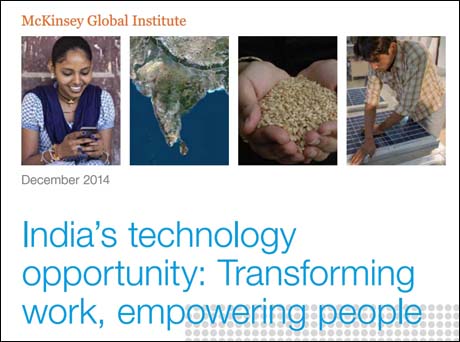
Mumbai, December 17 2014: A new McKinsey Global Institute (MGI) report identifies a dozen technologies, ranging from the mobile Internet to cloud computing to advanced genomics, which could have a combined economic impact of $550 billion to $1 trillion a year in 2025.
The selection of the 12 technologies for India was based on a similar process established by MGI’s earlier work on disruptive technologies.
For India, they used additional criteria to identify the technologies that would have a direct impact on the country’s economic and social challenges in the coming decade. As a result, McKinsey include technologies such as electronic payments, which are well established in other parts of the world but not well developed in India. By 2025, however, electronic payments could help 300 million Indians join the country’s financial system.
The authors Noshir Kaka, Anu Madgavkar, James Manyika, Jacques Bughin, and Pradeep Parameswaran, group the 12 technologies into three areas: digitizing life and work, smart physical systems, and energy technologies:
Digitizing life and work—the mobile Internet, the cloud, the automation of knowledge work, digital payments, and verifiable digital identity
Smart physical systems—the Internet of Things, intelligent transportation and distribution systems, advanced geographic information systems (GIS), and next-generation genomics
Energy—unconventional oil and gas (horizontal drilling and hydraulic fracturing), renewable energy, and advanced energy storage
They conclude:
Each of these technologies has the potential for rapid adoption in India between now and 2025
To capture the full potential value of these technologies, India will need to address barriers such as its limited telecom infrastructure and a lack of computer literacy among Indians. In addition, policy makers can create an environment in which these technologies flourish by adopting appropriate regulations that protect the rights of citizens and by helping to foster an environment for innovation. Government can encourage the growth of tech industries and applications by supporting efforts to create standards and can help entrepreneurs scale up ideas into major companies through reforms to regulatory systems. Finally, India can raise its investment in research and development, which in 2010 was 0.87 percent of GDP, compared with 1.7 percent in China and 3.36 percent in South Korea.
Link to executive summary and full report